
The Congressionally Directed Medical Research Programs (CDMRP) offer a great way for small biomedical research companies that are unfamiliar with the Department of Defense (DoD)-associated funding opportunities and application processes to ease into broadening their funding sources to include DoD resources. CDMRP is a congressionally funded special interest set of programs that are managed by the DoD. The CDMRP fills research gaps by funding high impact, high risk, and high reward projects, as well as a continuum of basic research to clinical trials that other agencies may not venture to fund. While individual programs are unique in their focus, all programs managed by the CDMRP share the common goal of advancing paradigm shifting research, solutions that will lead to cures or improvements in patient care, accelerate breakthrough technologies, and provide needed resources for clinical benefit.
Congressional funding for CDMRP has been steadily increasing over the years, and more research programs are being added (while some are removed – an update on changes in CDMRP funding topics over time will be posted in another article soon). New programs for fiscal year (FY) 2019 are the Chronic Pain Management Research Program (CPMRP), Combat Readiness Medical Research Program (CRMRP), and Melanoma Research Program (MRP). Total Congressional appropriations for the period of FY 1992 – 2019 is $14.7 billion ($1.02 billion for FY19). Here we will examine the seven top-funded CDMRP programs over the last several years.
1. Peer Reviewed Medical Research Program (PRMRP)
As the CDMRP program covering the broadest spectrum of military-focused scientific and medical research goals, the PRMRP is by far the most heavily-funded program, and has only been increasing in recent years. Topic Areas span a wide range of topics and conditions and are determined on an annual basis; you can view a history of the FY19 PRMRP topic areas here.

The FY19 PRMRP funding opportunities are open and currently accepting pre-applications for several award mechanisms.

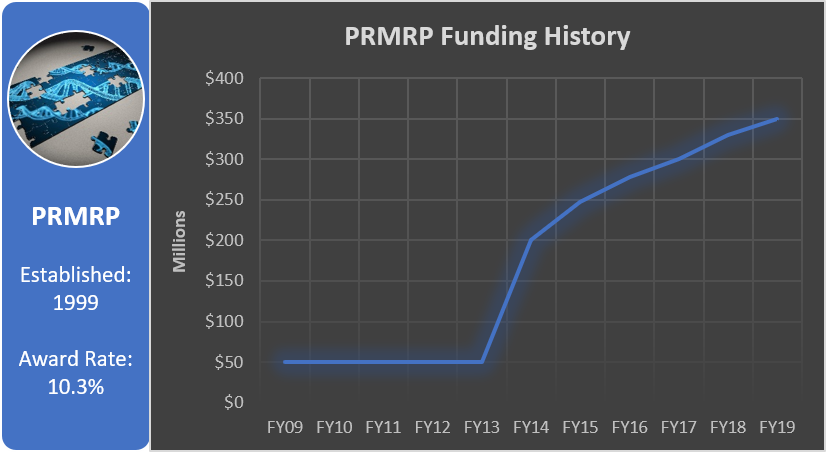
2. Defense Medical Research and Development Program (DMRDP)
The DMRDP is executed on behalf of the Defense Health Program (DHP) of the Defense Health Agency Research, Development, and Acquisition Directorate (DHA RDA). DHP major research areas are managed by Joint Program Committees (JPCs) consisting of DoD and non-DoD medical and military technical experts. DMRDP includes six JPCs:
– Medical Simulation and Information Sciences Research Program (JPC-1)
– Military Infectious Diseases Research Program (JPC-2)
– Military Operational Medicine Research Program (JPC-5)
– Combat Casualty Care Research Program (JPC-6)
– Radiation Health Effects Research Program (JPC-7)
– Clinical and Rehabilitative Medicine Research Program (JPC-8)
The Combat Casualty Care Research Program (JPC-6) has released the first FY19 DMRDP award mechanism. Additional DMRDP funding opportunities may be released for FY19.

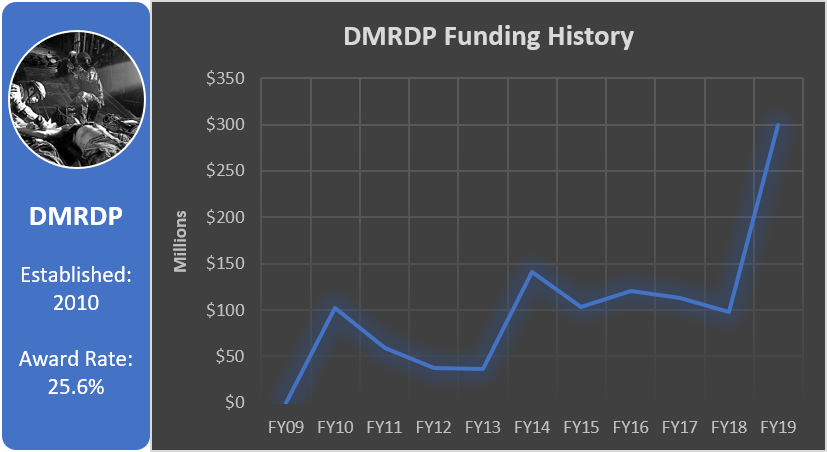
3. Breast Cancer Research Program (BCRP)
The BCRP is the premier research program of the CDMRP and has consistently received funding since its launch in 1992, averaging $137.6M per year. The BCRP seeks applications that address the following overarching challenges: prevent breast cancer (primary prevention); identify determinants of breast cancer initiation risk, or susceptibility; distinguish deadly from non-deadly breast cancers; conquer the problems of overdiagnosis and overtreatment; identify what drives breast cancer growth and determine how to stop it; identify why some breast cancers become metastatic; determine why/how breast cancer cells lie dormant for years and then re-emerge and how to prevent lethal recurrence; revolutionize treatment regimens by replacing them with ones that are more effective, less toxic, and impact survival; and eliminate the mortality associated with metastatic breast cancer. The FY19 BCRP is currently accepting pre-applications (either pre-proposals or letters of intent) for each award mechanism with deadlines in mid-March.

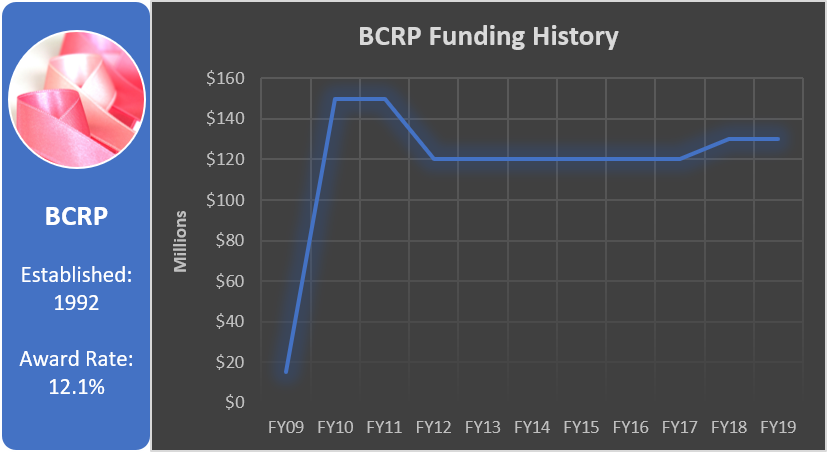
4. Prostate Cancer Research Program (PCRP)
The PCRP is dedicated to supporting research focused on eradicating prostate cancer, the most commonly diagnosed non-skin cancer in men and the second most common cause of male death from cancer. The FY19 PCRP funding opportunities are expected to be released around May. Overarching challenges for FY18 were to develop treatments that improve outcomes for men with lethal prostate cancer; reduce lethal prostate cancer in African Americans, Veterans, and other high-risk populations; define the biology of lethal prostate cancer to reduce death; and improve the quality of life for survivors of prostate cancer.

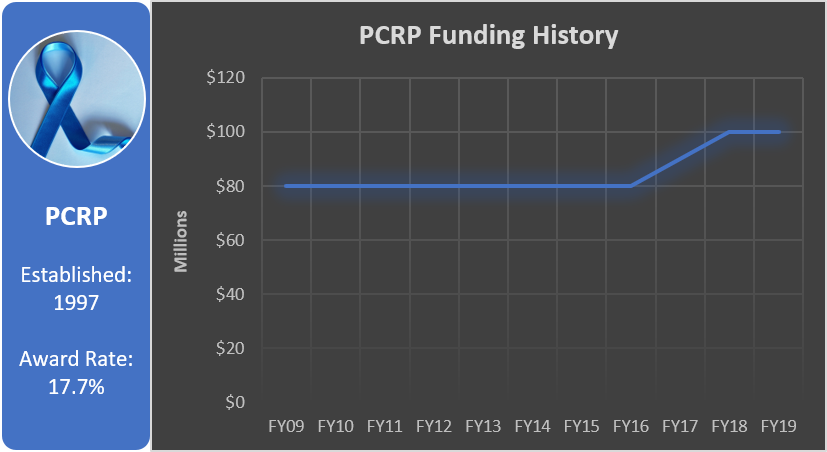
5. Psychological Health/Traumatic Brain Injury (PH/TBI) Research Program
The PH/TBI research program is also managed on behalf of the DHA RDA. The vision of the PH/TBIRP is to prevent, mitigate, and treat the effects of traumatic stress and traumatic brain injury on function, wellness, and overall quality of life for Service members as well as their caregivers and families. FY19 PH/TBIRP funding opportunities are anticipated to be released around August – October.

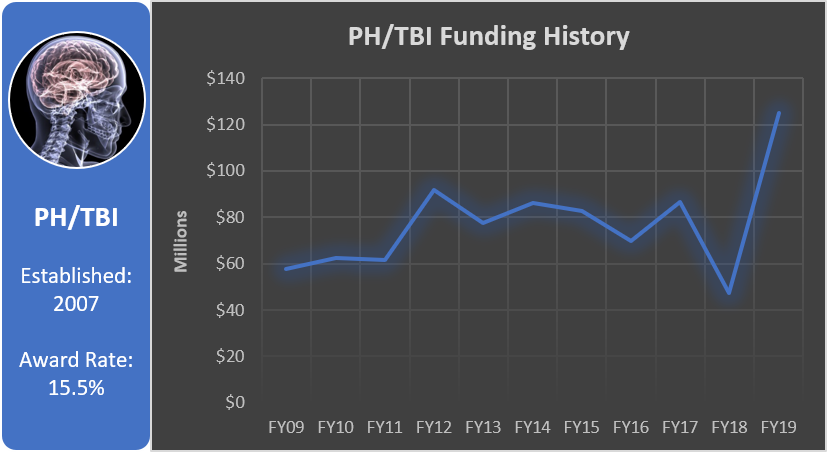
6. Peer Reviewed Cancer Research Program (PRCRP)
The PRCRP focuses on gaps in cancer research with respect to unique situations and military environments. FY19 PRCRP Topic Areas are bladder cancer; blood cancers; brain cancer; colorectal cancer; immunotherapy; listeria-based regimens for cancer; liver cancer; lymphoma; mesothelioma; neuroblastoma; pancreatic cancer; pediatric brain tumors; rare cancers (occurs in < 15 out of 100,000 people each year); stomach cancer; and cancer in children, adolescents, and young adults. The FY19 PRCRP funding opportunities are expected to be released in early April.

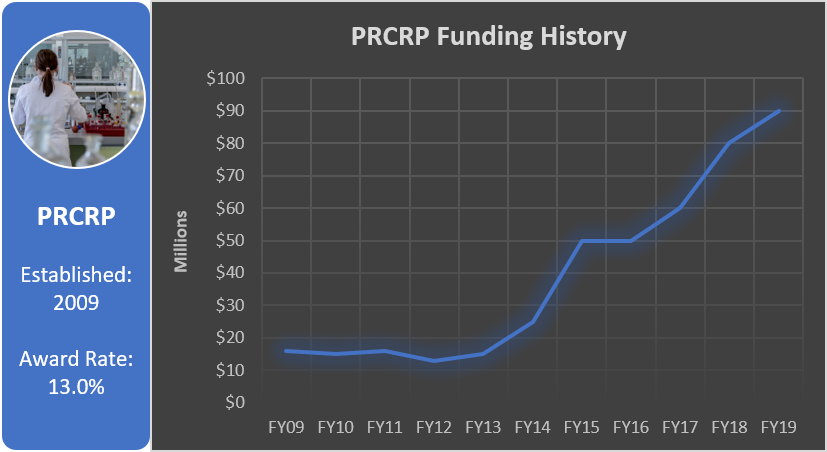
7. Joint Warfighter Medical Research Program (JWMRP)
The mission of the JWMRP is to accelerate research and development projects that have the potential to close high priority Department of Defense capability gaps. As such, JWMRP funding covers a wide range of research and product development efforts aligned with each of the six DMRDP Joint Program Committees (JPC) domains. Examples of previous efforts include the development of transportable pathogen reduction and blood safety systems, passive physiological monitoring systems for use during medical evacuation, and implantable nanosensors. However, eligibility to this program is restricted only to previous DoD congressionally-funded efforts.

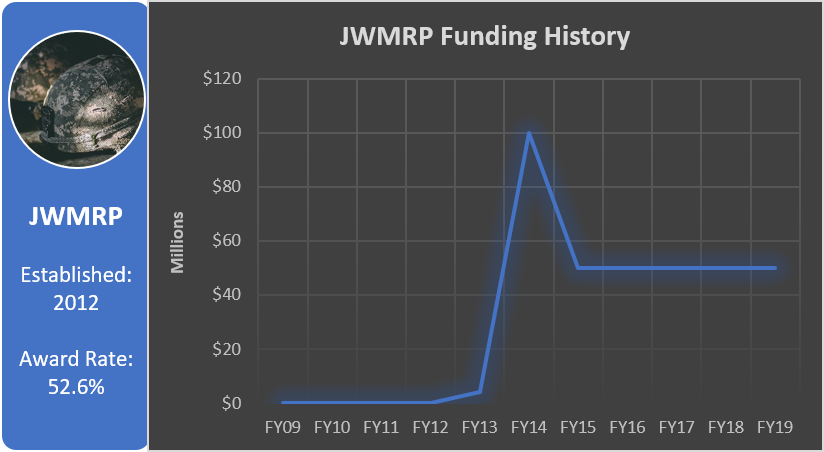
Funding for Other CDMRP Research Programs
Below is a comprehensive listing of the appropriated amounts for each CDMRP program for FY19, as of November 2018, arranged in descending order:
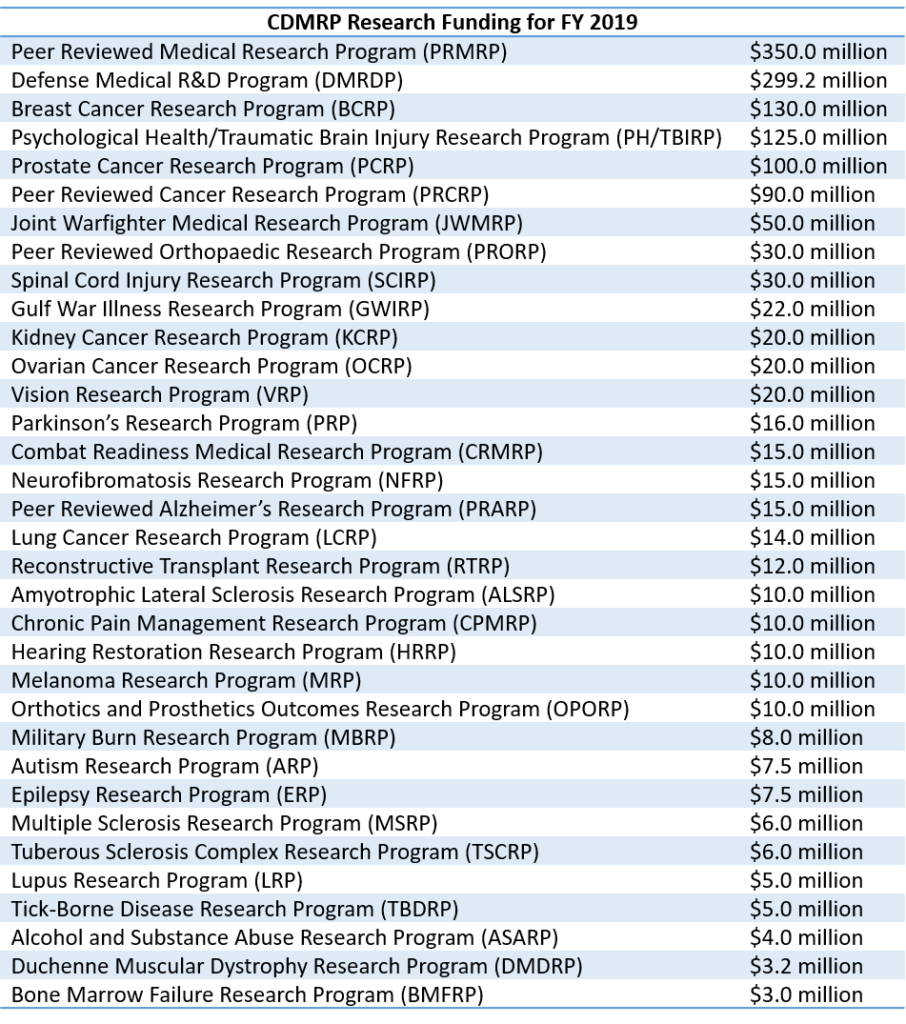
If your small business has dual-use (i.e., applicable to military and civilian populations) biomedical or human system technologies that can improve the operational readiness, situational awareness, or healthcare for our military personnel, Veterans, and their families, consider utilizing DoD non-dilutive funding resources such as the CDMRP to accelerate your technologies to DoD, VA, civilian, and international marketplaces. Contact us to learn how Tier Seven can assist your company in connecting with potential DoD partners and forming research collaborations.
01 Mar
2019
